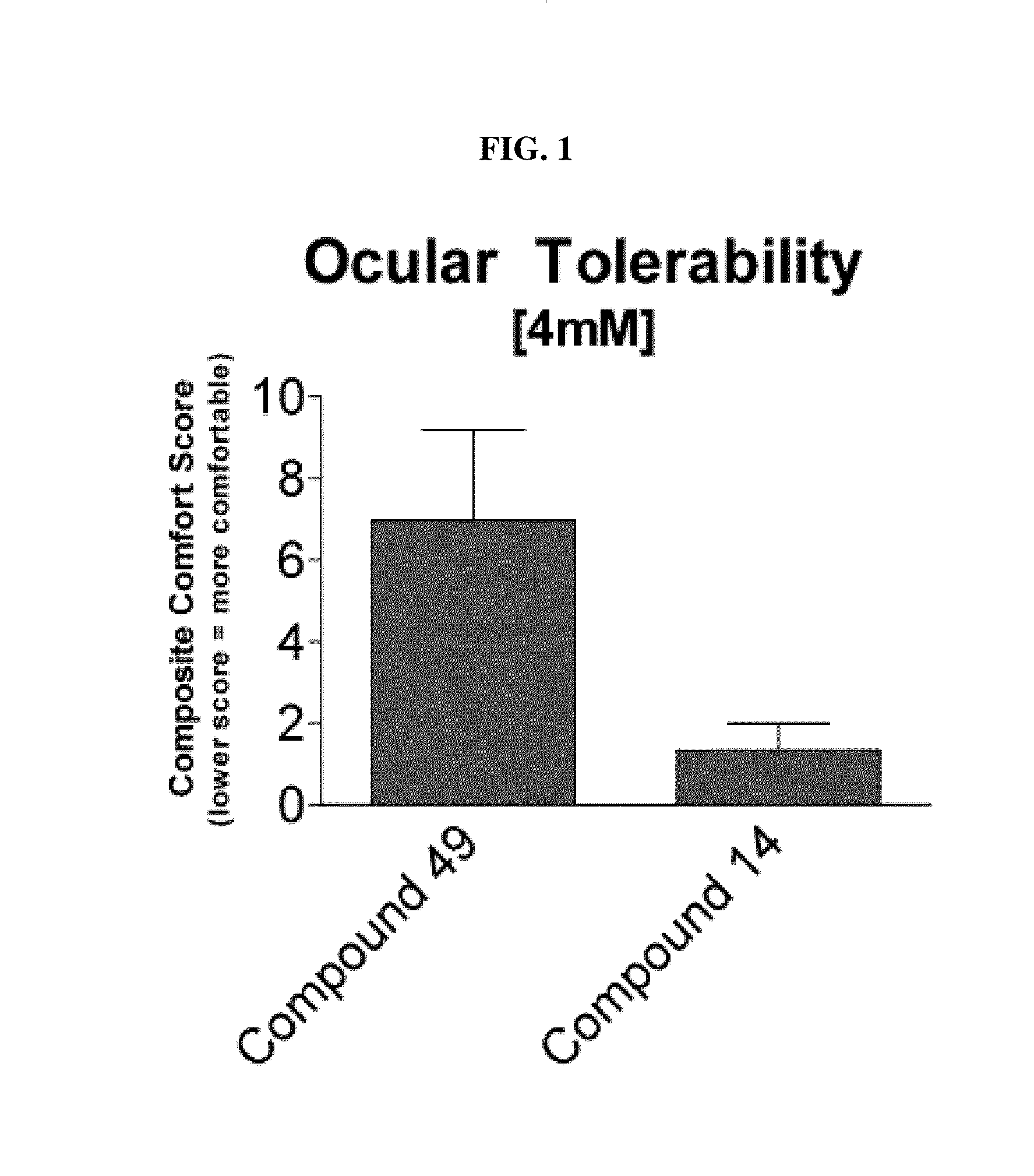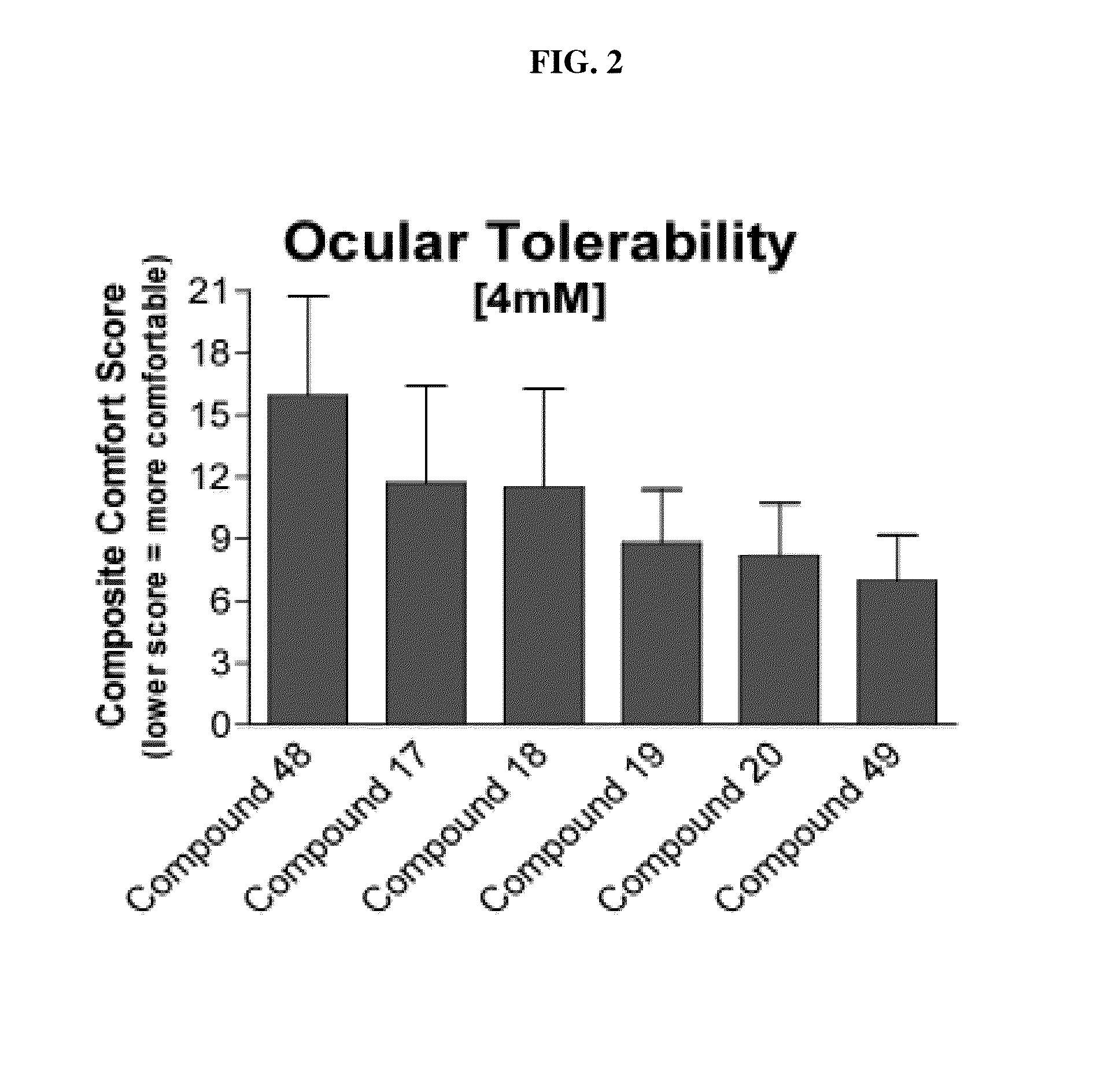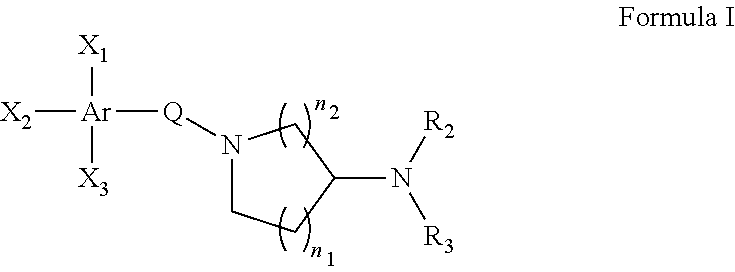Method for treating ophthalmic diseases using kinase inhibitor compounds in prodrug forms
a technology of kinase inhibitors and prodrug forms, which is applied in the direction of drug compositions, biocide, heterocyclic compound active ingredients, etc., can solve the problems of swelling and blurring vision, uncontrollable symptoms, and tolerating undesired side effects
- Summary
- Abstract
- Description
- Claims
- Application Information
AI Technical Summary
Benefits of technology
Problems solved by technology
Method used
Image
Examples
example 1
[0074]
2,2-Dimethyl-1-(5-nitro-1H-indazol-1-yl)propan-1-one
[0075]A 3-neck round bottom flask fitted with a nitrogen inlet and mechanical stirrer was charged with a solution of 5-nitroindazole in tetrahydrofuran. The mixture was cooled to 0° C. and 1.2 equivalents of triethylamine was added. To the mixture was added 1.05 equivalents of pivaloyl chloride dropwise over a period of 15 minutes. The reaction was allowed to warm to 20° C. over a period of 2 hours. The reaction was filtered and concentrated to a dark red oil. To the oil was added methylene chloride and the resulting slurry was stirred vigorously, giving a white precipitate that was isolated by filtration. The solid was dried in a vacuum oven at 40° C. overnight to afford the title compound.
example 2
[0076]
1-(5-Amino-1H-indazol-1-yl)-2,2-dimethylpropan-1-one Maleate
[0077]Into a 0.5 L stainless steel reaction vessel were added 2,2-dimethyl-1-(5-nitro-1H-indazol-1-yl)propan-1-one (Example 1, 1 equivalent), ethanol and 10% palladium on charcoal (2 mol %). The vessel was sealed, evacuated and refilled with nitrogen three times, and evacuated and refilled with hydrogen to 75 psi. As the hydrogen was consumed, the vessel was refilled until a pressure of 75 psi was maintained. The vessel was degassed and the reaction mixture was removed, filtered over celite, and concentrated to give the desired product as a yellow oil. The crude product was dissolved in ethanol and a solution of maleic acid (1 equivalent) in ethanol was added in one portion. The mixture was stirred vigorously. As a precipitate began to form, the mixture was cooled to 0° C. and stirred for thirty minutes. The precipitate was isolated by filtration and dried in a vacuum oven at 30° C. overnight to provide the title comp...
example 3
[0078]
tert-Butyl 3-(1-Pivaloyl-1H-indazol-5-ylamino)piperidine-1-carboxylate
[0079]Into a 3-neck round bottom flask fitted with a nitrogen inlet and mechanical stirrer was added tert-butyl 3-oxopiperidine-1-carboxylate and an equimolar amount of 1-(5-amino-1H-indazol-1-yl)-2,2-dimethylpropan-1-one maleate salt (Example 2) in 1,2-dichloroethane. The vessel was purged with nitrogen and stirred at 20° C. for one hour. Sodium triacetoxyborohydride (1.3 equivalents) was added, and the reaction was monitored by analytical TLC to completion. The reaction was quenched with saturated sodium bicarbonate. The organic phase was isolated, dried over MgSO4, filtered and evaporated to dryness to afford the title compound as a yellow solid.
PUM
| Property | Measurement | Unit |
|---|---|---|
| Pressure | aaaaa | aaaaa |
| Composition | aaaaa | aaaaa |
| Concentration | aaaaa | aaaaa |
Abstract
Description
Claims
Application Information
 Login to View More
Login to View More - R&D
- Intellectual Property
- Life Sciences
- Materials
- Tech Scout
- Unparalleled Data Quality
- Higher Quality Content
- 60% Fewer Hallucinations
Browse by: Latest US Patents, China's latest patents, Technical Efficacy Thesaurus, Application Domain, Technology Topic, Popular Technical Reports.
© 2025 PatSnap. All rights reserved.Legal|Privacy policy|Modern Slavery Act Transparency Statement|Sitemap|About US| Contact US: help@patsnap.com



